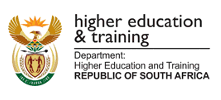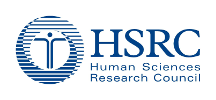This case study report is a product of the Labour Market Intelligence Partnership (LMIP), a largescale, long-term research and development project that aims to support the Department of Higher Education and Training’s mandate to establish a credible institutional mechanism for skills planning. Specifically, it reflects research conducted to address the theme of ‘Reconfiguring the postschooling sector’. The aim is to investigate the ways in which alignment between different types of public and private education and training systems and labour markets can be improved. It investigates how organisational capabilities, structures and curriculum mechanisms facilitate or constrain interaction with labour market organisations, in a differentiated post-school sector.
There are two sub-projects in this theme of work. Project 1 is designed to focus on the capabilities of education and training organisations to interact with labour market stakeholders, and is led by Glenda Kruss of the HSRC. Project 2 focuses on curriculum responsiveness and is led by Volker Wedekind of the University of KwaZulu-Natal. The boundaries for the empirical investigation are drawn by four sectoral systems of innovation (SSI):
• Forestry growers (focused in KwaZulu-Natal)
• Sugarcane growers and millers (focused in KwaZulu-Natal)
• Automotive components manufacturers (focused in Port Elizabeth)
• Square Kilometre Array (SKA) (national)
The research attempts to identify appropriate change mechanisms, and hence, provide systemic knowledge to direct funding and interventions where DHET can have leverage in future, and education and training organisations can maintain their core roles in new ways.
This case study analysis forms part of Project 1, which investigates the distinct knowledge and technology base, the main actors, institutions and networks of each SSI, and the ways in which education and training organisations display dynamic interactive capabilities. It should be read in conjunction with a set of inter-related LMIP reports:
• Report 4: Responding to Shifting Demand for Skills: How do we get firms and post-school education and training organisations to work together? By Glenda Kruss, Il-haam Petersen, Simon McGrath and Michael Gastrow (2014)
• Report 7: Understanding Interactive Capabilities for Skills Development in Sectoral Systems of Innovation: A case study of the Tier 1 automotive component sector in the Eastern Cape. By Simon McGrath (2015)
• Report 8: Understanding Interactive Capabilities for Skills Development in Sectoral Systems of Innovation: A case study of the sugarcane growing and milling sector in KwaZulu-Natal. By Il-haam Petersen (2015)





